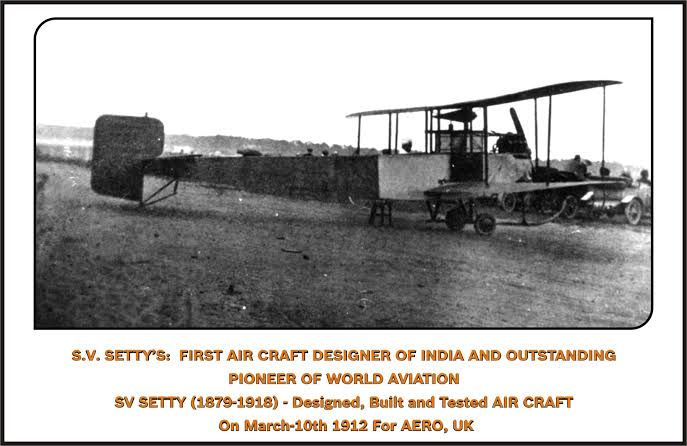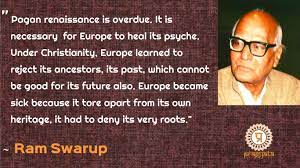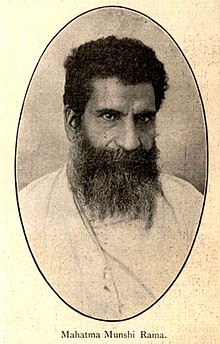#NeglectedHeroes
Yesterday happened to be the Jayanti of Hindu Hruday Samrat #KM_Munshi.
It’s time to remember his fight to rebuild #SomnathMandir.
Munshi, was a political thinker, constitutional expert, an institution-builder, great patron of Indian culture and civilisation.



Yesterday happened to be the Jayanti of Hindu Hruday Samrat #KM_Munshi.
It’s time to remember his fight to rebuild #SomnathMandir.
Munshi, was a political thinker, constitutional expert, an institution-builder, great patron of Indian culture and civilisation.




Very few remember his contribution towards the rebuilding of the Somnath temple at Prabhas, and the challenges he faced therein.
In 1922, Munshi wrote about the emotional pain that Indians feel about the destruction of the Somnath temple and its ruins:
“Desecrated, burnt and
In 1922, Munshi wrote about the emotional pain that Indians feel about the destruction of the Somnath temple and its ruins:
“Desecrated, burnt and
battered, it still stood firm – a monument of our humiliation, and ingratitude. I can scarcely describe the burning shame which I felt on that early morning as I walked on the broken floor of the once-hallowed sabha mandap, littered with broken pillars and scattered stones.
Lizards slipped in and out of their holes and the sound of my unfamiliar steps, and Oh! The shame of it! – an inspector’s horse, tied there, neighed at my approach with sacrilegious impertinence.”
The Nawab of Junagarh would just not allow the Hindus to rebuild it. But after
The Nawab of Junagarh would just not allow the Hindus to rebuild it. But after
the accession of Junagarh to India in October 1947, Sardar Patel announced at a public meeting:
“On this auspicious day of the New Year, we have decided that Somnath should be reconstructed. You, people of Saurashtra, should do your best. This is a holy task in which all should
“On this auspicious day of the New Year, we have decided that Somnath should be reconstructed. You, people of Saurashtra, should do your best. This is a holy task in which all should
Participate".
There was some resistance. Maulana Abul Kalam Azad, the education minister and a good friend of Nehru, opposed the idea, and in one of the cabinet meetings, argued that the ruins should be handed over to the ASI, to be preserved as a historical monument.
Sardar,
There was some resistance. Maulana Abul Kalam Azad, the education minister and a good friend of Nehru, opposed the idea, and in one of the cabinet meetings, argued that the ruins should be handed over to the ASI, to be preserved as a historical monument.
Sardar,
was very firm & responded,
“The Hindu sentiment in regard to this temple is both strong and widespread. In the present conditions, it is unlikely that this sentiment will be satisfied by mere restoration of the temple or by prolonging its life. The restoration of idol would be
“The Hindu sentiment in regard to this temple is both strong and widespread. In the present conditions, it is unlikely that this sentiment will be satisfied by mere restoration of the temple or by prolonging its life. The restoration of idol would be
a point of honour and sentiments with the Hindu public.”
Nehru presided over the cabinet meeting in which this decision was taken.
But Sardar passed away on 15 Dec 1950. MKG who also approved of the temple plan, was already gone. Nehru became very hostile, not just to the temple
Nehru presided over the cabinet meeting in which this decision was taken.
But Sardar passed away on 15 Dec 1950. MKG who also approved of the temple plan, was already gone. Nehru became very hostile, not just to the temple
project, but to cabinet colleagues—mainly Munshi and V.N. Gadgil—who were associated with it. Both Gadgil’s & Munshi’s writings bring this out clearly. The preparations began for the prana-pratishtha as per the shaastras and the President, Dr Rajendra Prasad, was requested to
conduct the ceremony.
In the midst of all this, Nehru called Munshi and said: “I don’t like your trying to restore Somnath. It is Hindu revivalism.” Munshi felt humiliated, more so because Nehru made it seem as if things were being done without his knowledge.
On 24 April 1951,
In the midst of all this, Nehru called Munshi and said: “I don’t like your trying to restore Somnath. It is Hindu revivalism.” Munshi felt humiliated, more so because Nehru made it seem as if things were being done without his knowledge.
On 24 April 1951,
Munshi wrote a long letter to Nehru. Many things related to the rebuilding of the Somnath temple would have remained completely unknown, had it not been for this letter. The letter is available in Munshi’s book ‘Pilgrimage to Freedom’.
“On 13 Dec 1947, the Standing Commitee
“On 13 Dec 1947, the Standing Commitee
of the W.M.P. Ministry accepted Gadgil’s proposal that the GOI should reconstruct the temple in the original form and develop roughly one square mile of the surrounding area. I understand that this decision was included in the weekly note to the Cabinet.
As I learnt from Gadgil
As I learnt from Gadgil
it was also mentioned to the Cabinet.
At the time, the decision of the Govt was that the W.M.P. Ministry should reconstruct the old shrines and they were doing so in the case of certain Muslim shrines and mosques.
The GOI, thereafter, deputed Govt architects to visit Prabhas &
At the time, the decision of the Govt was that the W.M.P. Ministry should reconstruct the old shrines and they were doing so in the case of certain Muslim shrines and mosques.
The GOI, thereafter, deputed Govt architects to visit Prabhas &
prepare a report for the reconstruction of the temple.
When the whole scheme was discussed by Sardar with Bapu, he stated that it was alright except that the funds necessary for re-construction should come from the public. Gadgil also saw Bapu who gave him the same advice.
When the whole scheme was discussed by Sardar with Bapu, he stated that it was alright except that the funds necessary for re-construction should come from the public. Gadgil also saw Bapu who gave him the same advice.
Thereafter, the idea that the GOI should finance the reconstruction of the temple was given up…
As you will see, the GOI not only took the initial decision to reconstruct the temple, but formulated & set the scheme going; alongside creating agency for further implementation.
As you will see, the GOI not only took the initial decision to reconstruct the temple, but formulated & set the scheme going; alongside creating agency for further implementation.
This will clearly indicate to you the extent of association, the GOI has with the scheme…
Yesterday, you referred to ‘Hindu revivalism.’ It is my faith in our past which has given me the strength to work in the present and look forward to our future. I cannot value freedom if
Yesterday, you referred to ‘Hindu revivalism.’ It is my faith in our past which has given me the strength to work in the present and look forward to our future. I cannot value freedom if
it deprives us of the Bhagavad Gita or uproots millions from the faith with which they look upon our temples and thereby destroys the texture of our lives. I have been given the privilege of seeing my incessant dream of Somnath reconstruction come true. That makes me feel—makes
me almost sure—that this shrine once restored to a place of importance in our life, will give our people a purer conception of religion, more vivid consciousness of our strength, so vital in these days of freedom and its trials.”
Gadgil, the Minister of Urban Development and
Gadgil, the Minister of Urban Development and
Rehabilitation then, has also mentioned this attitude of Nehru, after Sardar’s death. Gadgil wrote:
“I quoted from the Cabinet reports to prove that Nehru’s charge that the thing was being done without informing the Cabinet was not correct. Maulana and Jagjivan Ram said that the
“I quoted from the Cabinet reports to prove that Nehru’s charge that the thing was being done without informing the Cabinet was not correct. Maulana and Jagjivan Ram said that the
matter was discussed.
GOI had spent about 1,00,000 on the work.”
But for the courage & conviction of Munshi, Somnath would've
not been built. Despite Nehru’s strong disapproval & opposition, President Dr Rajendra Prasad did perform the prana–pratishtha ceremony.
#VANDEMATARAM
GOI had spent about 1,00,000 on the work.”
But for the courage & conviction of Munshi, Somnath would've
not been built. Despite Nehru’s strong disapproval & opposition, President Dr Rajendra Prasad did perform the prana–pratishtha ceremony.
#VANDEMATARAM

• • •
Missing some Tweet in this thread? You can try to
force a refresh




















